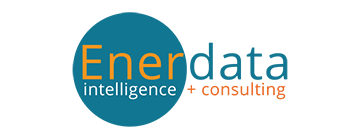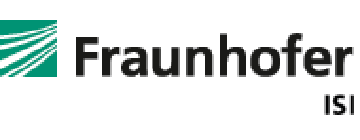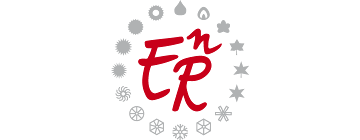Overview
The final energy consumption climate corrected in 2022 was 112.7 Mtoe, almost in line with pre-COVID pandemic consumption in 2019 (-1.2%) and below the consumption in 2000 (-5.6%). In 2022 the largest consuming sector was transport with 32% of total final energy consumption (1 percentage points decrease since 2000). Over the period 2000-2022 the share of residential and services sectors grew by 4.4 and 5.4 percentage points, respectively: the building sector, comprising residential and services sectors, represents 43% of total final energy consumption in 2022. The share of industry decreased from 31% in 2000 to 22% in 2000 (-12 Mtoe).
Figure 1: Final energy consumption by sector (with climatic corrections)
Source: ODYSSEEEnergy efficiency of final consumers, as measured by ODEX, improved by 20% over the period 2000-2022 at an average of 1% per year. The highest progress in energy efficiency was achieved by the industry: 1.4% per year over the period 2000-2022. The improvement in transport sector was quite constant, 1.2% per year, with however an acceleration in the years 2015-2018 due to an increase in passenger traffic that was greater than energy consumption. The residential sector had a slower energy efficiency progress (0.7% per year over 2000-2022).
Figure 2: Technical Energy Efficiency Index
Source: ODYSSEEIn July 2024, Italy submitted the final update of the NECP with a significant reduction in primary and final energy consumption due to the planned measures: in particular, increase in the rate of renovation of buildings (in line with Directive (EU) 2024/1275) with the electrification of consumption, insulation of dispersing surfaces, and heat pumps as the main heating system. Tax incentives will be revised to take into account investment priorities and effectiveness in terms of improvement. The Plan estimates overall energy savings over the period 2021-2030 equal to 73.4 Mtoe. L.D. n. 73/2020 transposes the EU directive 2018/2002 on the Energy Efficiency First Principle into the Italian regulatory framework. The L.D. provides incentives for SMEs for the implementation of energy management systems ISO 50001 and for energy audits every two years until 2030, extends to 2030 the National Energy Efficiency Fund and Programme for the Energy Renovation of the buildings of the Central Public Administration (PREPAC). Ministerial Decree 10 August 2022 allocated 2 billion euros for the Fund for development and cohesion (FSC 2021-2027) to finance investments to help decrease direct GHG emissions through electrification, the use of renewable hydrogen instead of fossil fuels, and the reduction of energy consumption.
Table 1: Sample of cross-cutting measures
| Measures | NECP measures | Description | Expected savings, impact evaluation | More information available |
|---|---|---|---|---|
| National Energy Efficiency Fund | Yes | The Fund is aimed at promoting the financing of interventions necessary for the achievement of national energy efficiency targets, promoting the involvement of financial institutions and private investors, based on adequate risk sharing. The Fund supports energy efficiency measures carried out by companies, including ESCOs, and by the Public Administration, on buildings, plants and production processes. | 32.00 TJ | Link |
| Subsidies to Municipalities for energy efficiency and sustainable development | No | The 2020 Budget Law (Law n. 160/2019) grants the Municipalities for the years 2020-2024 a maximum of 500 million Euros per year to carry out one or more public in energy efficiency and territorial development. The grants assigned to the Municipalities vary from 50,000 Euros to 250,000 Euros according to their population. The municipality benefiting from the subsidy is required to start the works by 15 September of each reference year of the grant. | 4.61 TJ | Link |
| Integrated national plan for energy and climate 2030 | No | Integrated National Plan for Energy and Climate 2030, prepared in implementation of Regulation (EU) 2018/1999, is the instrument identified by the Italian Government towards decarbonisation through a new energy policy that ensures the environmental, social and economic sustainability of national territory and accompany its energy transition. The objective is to achieve and exceed EU targets in energy efficiency and security renewable sources consumption integration of the national energy markets in the Single Market and competitiveness. | 13.84 TJ | Link |
Buildings
The household energy consumption per m2 for space heating has decreased by 0.7%/year since 2008 from 10 koe/m2 to 9.06 koe/m2 in 2022. The consumption per dwelling for the other end-uses has decreased rapidly since 2010 to 0.37 toe/dw in 2022 (-1.7%/year for a total of -18%). In particular the decrease was quite significant for water heating (-2.8%/year) and for appliances (-2.2%/year). The consumption per dwelling for air cooling doubled over the period 2010-2022.
Figure 3: Energy consumption of household space heating per m2 (with climatic corrections)
Source: ODYSSEE; ambient heat included.Figure 4: Energy consumption per dwelling by end-use (except space heating)
Source: ODYSSEEThe energy consumption of households grew by 2.4 Mtoe between 2000 and 2022. This increase was mainly due to two factors: more dwellings (+5.7 Mtoe) and greater comfort and lifestyle (+4.9 Mtoe, especially more appliances per dwelling). The effects of energy consumption increase were counterbalanced by energy savings (-5.6 Mtoe) and other effects (-2.1 Mtoe). These “other effects” combine two effects acting in different directions: the increasing use of ambient heat from heat pumps (+0.8 Mtoe) and behavioural changes (-2.9 Mtoe). Climate effects had a slight increasing impact of 0.3 Mtoe.
Figure 5: Main drivers of the energy consumption variation in households
Source: ODYSSEE; ambient heat included.Energy consumption per employee in service sector had a growing trend over the period 2000-2022: 1%/year with the peak in 2018 due to ambient heat counting. The electricity consumption per employee grew by 1.6%/year between 2000 and 2022, with a net slow down since 2011 (only +0.3%). Since 2021 electricity consumption includes the electricity consumption for heat pumps.
Figure 6: Energy and electricity consumption per employee in services (with climatic corrections)
Source: ODYSSEEThe Budget Law 2025 reduced the tax deductions for building renovations from 50% to 36% in 2025 and 30% in 2026-2027. In 2023 energy savings from tax deduction amounted to 2.04 Mtoe/year of energy. The Superbonus measure has been gradually weakened from 2023. In August 2022, the Italian government added EUR 500 million to the Fund for development and cohesion (total fund EUR 2 billion). This will finance investments for electrification, use of renewable hydrogen instead of fossil fuels, and the reduction of energy consumption. These projects are divided for 80% in Southern Italy and 20% in the Centre and North Italy. The Component C3 of Mission 2 of NRRP allocated 15.36 billion euros for buildings renovation across 3 lines of action: energy efficiency improvements of school buildings and judiciary buildings, energy efficiency improvement and seismic renovation of public and private residential buildings, district heating. The renovation will affect over 100,000 buildings, for over 36 million square meters.
Table 2: Sample of policies and measures implemented in the building sector
| Measures | NECP measures | Description | Expected savings, impact evaluation | More information available |
|---|---|---|---|---|
| Energy Efficiency and Renewable Energy Refurbishment tax reduction - Decreto Rilancio (Superbonus) | No | The Decree Law n. 34 of 19 May 2020, converted with amendments into Law n. 77/2020, was promulgated in the aftermath of the COVID-19 pandemic for the recovery of the economy. The Decree allocates part of the total budget to enhancing energy efficiency and renewable installations. In particular, the Decree establishes a 110% tax deduction (Superbonus) for expenses incurred from 1 July 2020 for the implementation of specific interventions aimed at energy efficiency and static consolidation or the reduction of the seismic risk of buildings. The installation of photovoltaic systems and infrastructure for recharging electric vehicles in buildings are also interventions eligible for the 110% tax deduction. Maximum eligible expenditure limits are set for each intervention. The 110% tax deductions for expenses incurred from 1 July 2020 to 31 December 2021, documented and paid by the taxpayer, are divided into five annual instalments of the same amount or into four annual instalments of the same amount for expenses incurred from 1 January 2022. | 4.02 TJ | Link |
| National Recovery and Resilience Plan - Energy efficiency and buildings renovation | No | The Italian National Recovery and Resilience Plan has an allocation of 191.5 billion euros, financed through the Recovery and resilience facility, plus additional 30.6 billion euros of national resources. The Plan is structured on 6 Missions: in particular, 37% of the funds are destined for the ecological transition (Mission 2) and sustainable mobility (Mission 3). Interventions aimed at energy efficiency are distributed within different Missions. The Component C3 of Mission 2 aims to improve the efficiency of public and private buildings, also by integrating renewable energies. This component includes 15.36 billion euros in total for energy efficiency measures across 3 lines of action: - M2C3.1 energy efficiency improvements of school buildings and judiciary buildings; - M2C3.2 energy efficiency improvement and seismic renovation of public and private residential buildings through the temporary incentive; - M2C3.3 district heating. | 4.02 TJ | Link |
| Renewable Energy for Heating and Cooling and Small Interventions Increasing Energy Efficiency Support Scheme (Conto Termico 2.0) - Residential sector | Yes | This measure functions as an inventive for renovating private buildings. Started in 2016, the main changes compared to the 1.0 version are the reduction of the time for the granting from six to two months and the introduction of new energy efficient measures. Conto Termico aims at installing systems that produce thermal energy from renewables and high-efficiency systems. | 1.34 TJ | Link |
Transport
Road transport for passengers and freight is the main mode of transport, 95% of energy consumption. In 2022 cars covered 52% (59% in 2000) of total consumption, followed by road freight for 37%. Over the period the share of rail and air transport consumption remained almost constant while water redused by 54%.
Figure 7: Transport energy consumption by mode
Source: ODYSSEEThe share of passenger traffic by car was 81.6% in 2022, followed by bus with 10.9% and rail with 7.6%. The share of cars decreased by 1.2 percentage points since 2000 while the share of rail increased by 1.2 percentage points. The share of bus remained stable.
Figure 8: Modal split of inland passenger traffic
Source: ODYSSEEThe share of freight transport by road was 87.8% in 2022, slightly down from 2000 (-0.8% points), while the share of rail transport increased by 0.9% points since 2000 to 12.2% in 2022. The share of water transport was negligible.
Figure 9: Modal split of inland freight traffic
Source: ODYSSEEOver the period 2000-2022, transport energy consumption reduced by 3.4 Mtoe (-8.5%). Energy savings (9.2 Mtoe) and decrease in activity (-1 Mtoe), due to a drop in passenger and freight traffic, led to a cut in energy consumption, which was partially counterbalanced by an increase in the share of road transport (“modal shift”) (0.6 Mtoe) and other effects (6.2 Mtoe), mainly low load factor in passenger and goods traffic.
Figure 10: Main drivers of the energy consumption variation in transport
Source: ODYSSEEThe 2023 Budget Law established a new fund for sustainable mobility aimed to achieve the emissions targets. The fund has an allocation of 2.2 billion euros for the period 2023-2034 intended to finance the renewal of buses, hydrogen trains, intermodality in the freight transport of goods, alternative fuels for ships and airplanes, the transformation of airports, the renewal of road transport vehicles. MIT-MEF Interministerial Decree n. 166/2023 set “Sea Modal Shift” replacing Marebonus: new incentive program for maritime companies to road/sea shift in short-medium range maritime transport: 21.5 million euros annually for years 2023-2026. The MIT Decree n.134/ allocates 22 million euros annually for Ferrobonus incentives for years 2023-2026. In 2023 energy savings amounted to 3.5 Mtoe/year of final energy.
Table 3: Sample of policies and measures implemented in the transport sector
| Measures | NECP measures | Description | Expected savings, impact evaluation | More information available |
|---|---|---|---|---|
| National Recovery and Resilience Plan - Rail upgrade and secure roads | No | Mission 3 "Infrastructure for sustainable mobility" of National Recovery and Resilience plan aims to build the necessary infrastructure for sustainable transport by 2026, contributing to the achievement of the European targets for reducing emissions and progressive decarbonisation of mobility. The planned investments are consistent with the Integrated National Energy and Climate Plan. The planned investments amount to 25.40 billion euros for - development of the Italian railway system: the main objective is to enhance the passengers and good transport by rail, increasing the capacity and connectivity of the railway and improving the quality of service along the main national and regional connections; - enhancement of the competitiveness of the port system for environmental sustainability and development of intermodal infrastructures on the basis of integrated planning. | 1.48 TJ | Link |
| Incentive for low-emissions vehicles | Yes | The 2019 Budget Law (Law 30 December 2018 n. 145) established a fund for the provision of subsidies for the purchase or lease of low-emission vehicles for the period 1 March 2019-31 December 2021. The vehicles have to be characterized by polluting emissions less than 70 g/km and price less than 50,000 Euros excluding VAT. | 4.45 TJ | Link |
| incentives for the purchase of non-polluting vehicles | No | The Decree of the President of the Council of Ministers of 6 April 2022, modified by the Decree of the President of the Council of Ministers of 4 August 2022, defines the incentives for the purchase of non-polluting vehicles in the years 2022, 2023 and 2024. The Fund for the incentives has resources of 650 million Euros for each year and it is assigned to the Ministry of Economic Development to disburse the grants. | 1.48 TJ | Link |
Industry
Over 2000-2022 energy consumption of industry decreased by 1.8%/year, from 36.8 Mtoe in 2000 to 24.7 Mtoe in 2022. All branches had significant decreases, especially non-metallic minerals (-43%), chemicals (-35%) and steel (-32%). The share of energy intensive branches (chemicals, steel, non-metallic minerals, non-ferrous metals and paper) was around 60% in 2022.
Figure 11: Final energy consumption of industry by branch
Source: ODYSSEEThe unit consumption of steel decreased by 1.5%/year over the period 2000-2022: some fluctuations were observed due to non-used production capacity and the economic crisis. The unit consumption of cement reduced by 2.3%/year: it remains quite stable over the period 2007-2014. The unit consumption of paper is at 2000 levels.
Figure 12: Unit consumption of energy‐intensive products (toe/t)
Source: ODYSSEEThe energy consumption of industry in 2022 was 12 Mtoe less than in 2000 (-32.6%). This decrease was mainly driven by energy savings (-10 Mtoe) and by a lower industrial activity, mostly due to the economic crisis and recession in years 2007-2015, which reduced consumption by 4 Mtoe. The effect of the structural changes towards less intensive branches contributed to lower consumption by 2.2 Mtoe.
Figure 13: Main drivers of the energy consumption variation in industry
Source: ODYSSEEThe Transition Plan 5.0, established by art. 38 of Legislative Decree 19/2024 and converted into Law 56/2024, grants a tax credit to enterprises that invest in innovation projects resulting in a reduction in energy consumption. The tax credit is proportional to the expenditure incurred for the investments made and the reduction in energy consumption. The Plan provides a total of approximately 13 billion in the two-year period 2024-2025. The measure is included in NECP 2024.
Table 4: Sample of policies and measures implemented in the industry sector
| Measures | NECP measures | Description | Expected savings, impact evaluation | More information available |
|---|---|---|---|---|
| Mandatory Energy Audit | Yes | For large enterprises and those with high energy consumption, it introduces energy audits mandatory: they must run it within 5 December 2015 and then every four years. | 5.29 TJ | Link |
| Transition 5.0 | Yes | The measure supports the transition of production processes to an efficient, sustainable and renewable energy model, with the goal of achieving energy savings of 0.4 Mtoe in the period 2024-2026. | Link |





